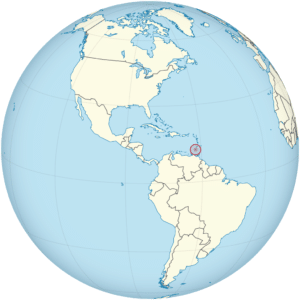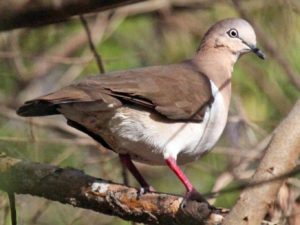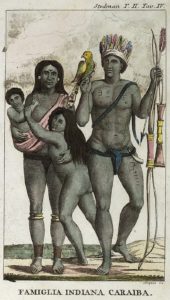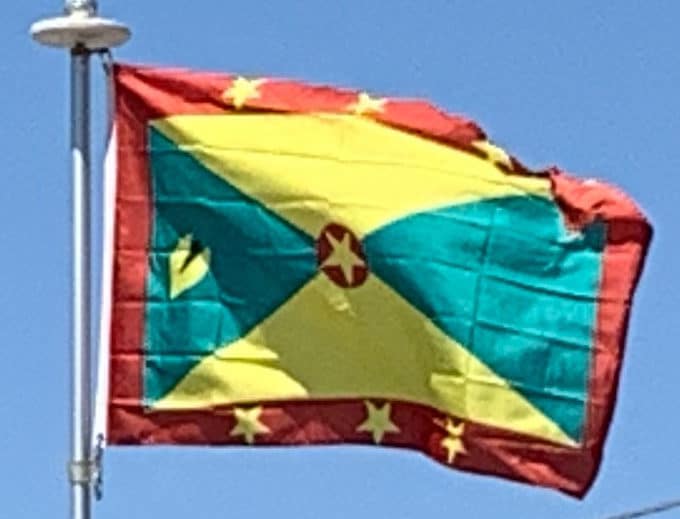Introduction:
Grenada is a sovereign state in the West Indies in the Caribbean Sea at the southern end of the Grenadines island chain. Grenada consists of the island of Grenada itself plus six smaller islands which lie to the north of the main island. It is located northwest of Trinidad and Tobago, northeast of Venezuela and southwest of Saint Vincent and the Grenadines. Its size is 348.5 square kilometres (134.6 sq mi), and it had an estimated population of 112,200 in July 2018. Its capital is St. George’s. Grenada is also known as the “Island of Spice” due to its production of nutmeg and mace crops. The national bird of Grenada is the critically endangered Grenada dove.

Before the arrival of Europeans in the Americas, Grenada was inhabited by the indigenous Arawaks and later by the Island Caribs. Christopher Columbus sighted Grenada in 1498 during his third voyage to the Americas. Although it was deemed the property of the King of Spain, there are no records to suggest the Spanish ever landed or settled on the island. Following several unsuccessful attempts by Europeans to colonize the island due to resistance from the Island Caribs, French settlement and colonization began in 1650 and continued for the next century. On 10 February 1763, Grenada was ceded to the British under the Treaty of Paris. British rule continued until 1974 (except for a period of French rule between 1779 and 1783). From 1958 to 1962 Grenada was part of the Federation of the West Indies, a short-lived federation of British West Indian colonies. On 3 March 1967, Grenada was granted full autonomy over its internal affairs as an associated state.

Independence as a sovereign state was granted on 7 February 1974, without breaking formal ties with the Commonwealth, under the leadership of Eric Gairy, who became the first Prime Minister of Grenada, with Queen Elizabeth as Head of State. In March 1979, the Marxist–Leninist New Jewel Movement overthrew Gairy’s government in a popular bloodless coup d’état and established the People’s Revolutionary Government (PRG), headed by Maurice Bishop as Prime Minister. Bishop was later executed by military hardliners, prompting a U.S.-led invasion in October 1983. Since then democratic governance has been restored and the island has remained politically stable.
History:
Pre-Colonial History:
Grenada was first populated by peoples from South America, possibly during the Caribbean Archaic Age, although definitive evidence is lacking. The earliest potential human presence comes from proxy evidence of lake cores, beginning ~3600 BC. Less ephemeral, permanent villages began around ~AD 300. The population peaked between AD 750-1250, with major changes in population afterwards, potentially the result of regional droughts and/or the “Carib Invasion“, although the latter rests on highly circumstantial evidence.

European Arrival:
It is thought that Christopher Columbus was the first European to see Grenada in 1498 during his third voyage, naming it ‘Concepción’. The Spanish did not follow up on this and it was the English who were the first to attempt to colonise the island in 1609; however they were beaten off by the native Carib peoples.
French Colony (1649–1763):
In 1649 a French expedition of 203 men from Martinique led by Jacques Dyel du Parquet founded a permanent settlement on Grenada. The French signed a peace treaty with the Carib chief Kairouane, but within months conflict broke out between the two communities. This lasted until 1654 when the island was completely subjugated by the French. The indigenous peoples who survived either left for neighboring islands or retreated to remoter parts of Grenada, where they ultimately disappeared during the 1700s. Warfare continued during the 1600s between the French on Grenada and the Caribs of present-day Dominica and St. Vincent and the Grenadines.
